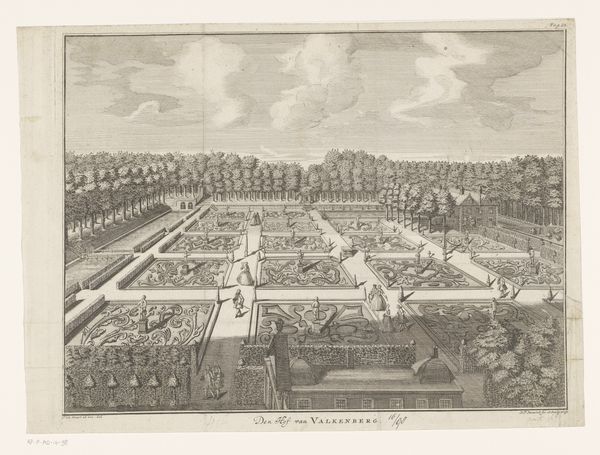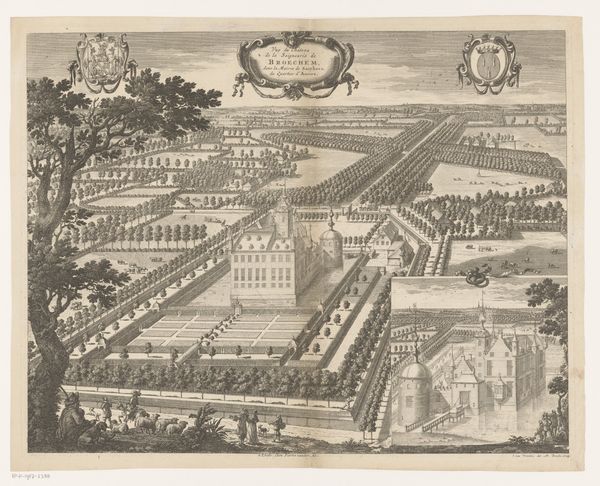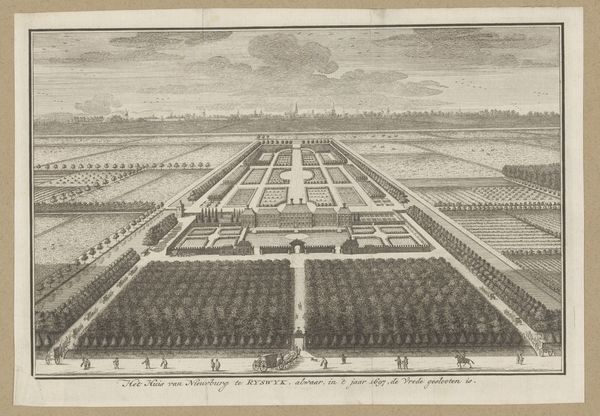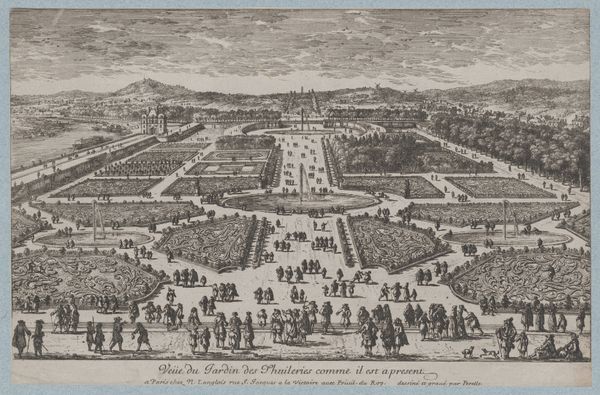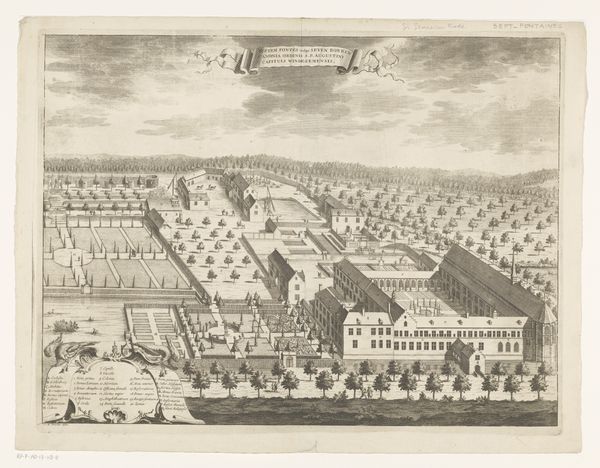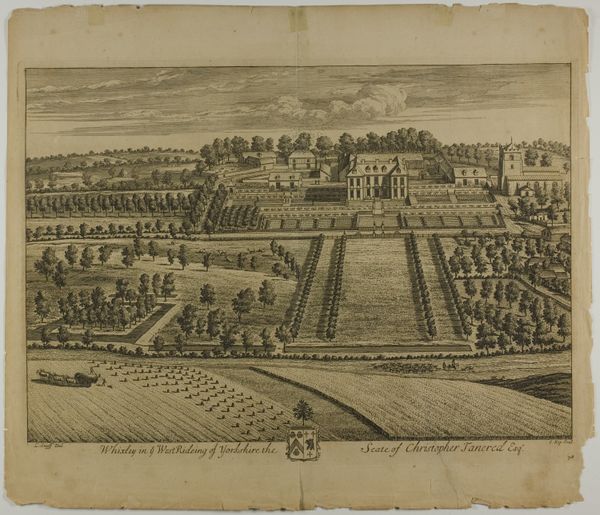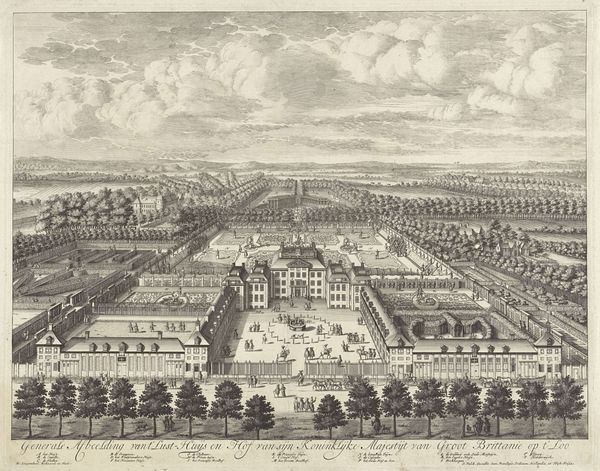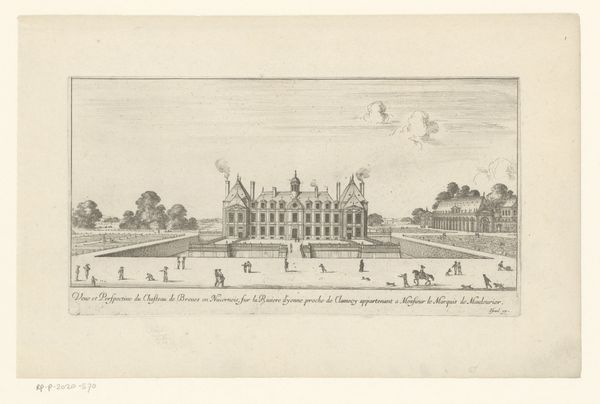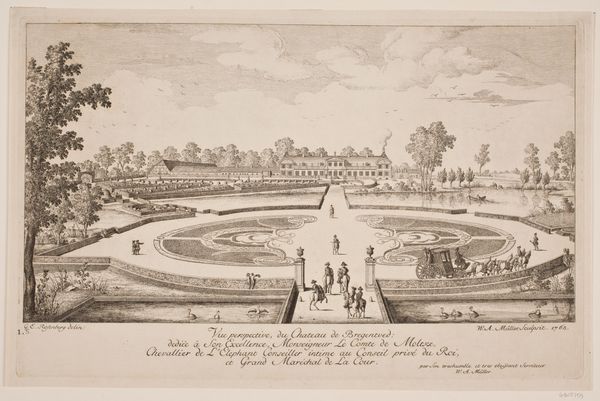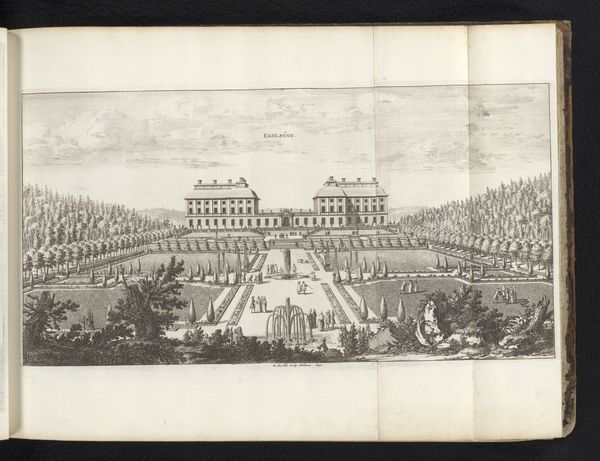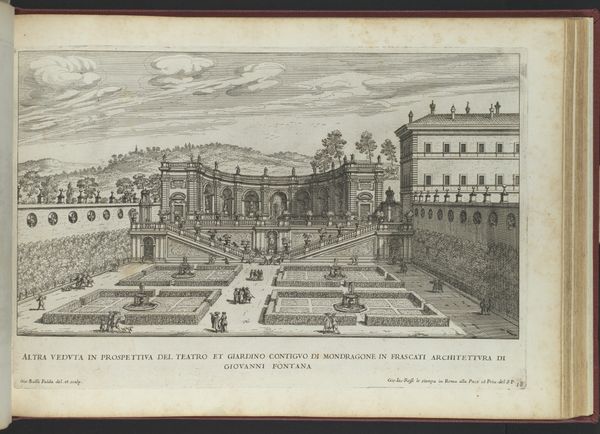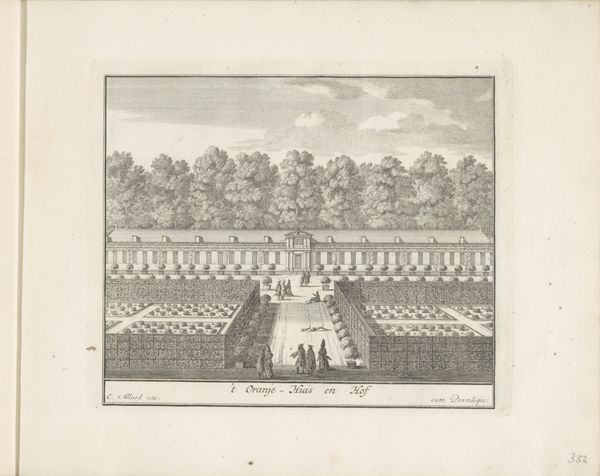
Dimensions: 412 mm (height) x 609 mm (width) (bladmaal)
Editor: Here we have "Perspektivisk vue over Marienlyst slot" from 1767, an etching by W.A. Müller. It depicts a palace and its gardens in great detail. The whole scene feels incredibly controlled and orderly. What's your interpretation of a piece like this? Curator: Well, consider the period. The Baroque era placed significant emphasis on order, reason, and control – particularly within court culture. Etchings like these weren't just decorative; they served to showcase power and refinement. Who was Marienlyst slot intended for? And how does this piece reflect those intended audience and purpose? Editor: It was dedicated to Juliane Marie, the Queen Dowager. So, you're saying it was a statement of status? Curator: Absolutely. Look at the geometric precision of the gardens, the clear lines of perspective. This etching visualizes the Queen's command over not only the land but also society itself. These grand estates weren't just homes, they were public relations tools for royal power. What’s your feeling about the social role of such imagery? Editor: I hadn't considered it that way before. It's interesting to think of art as a kind of… propaganda, in a way. Were these prints widely available, or were they intended for a smaller circle? Curator: Initially, probably a select audience – nobles, dignitaries, those who moved in the Queen's circles. But the point was to circulate an *idea* of her reign: cultured, sophisticated, powerful. The power of images lies in what they say without actually saying. Over time the prints might circulate more widely. How do we view public works today versus how people viewed them in the Baroque era? Editor: It gives me a lot to think about. I used to think of art from this period as beautiful but kind of stuffy. Now I can see that there were complex ideas about power and social control involved in something that might initially seem pretty. Curator: Precisely. It highlights how visual representations contribute to shaping societal perceptions and reinforcing existing power structures. Art serves multiple roles, aesthetic and social.
Comments
No comments
Be the first to comment and join the conversation on the ultimate creative platform.

